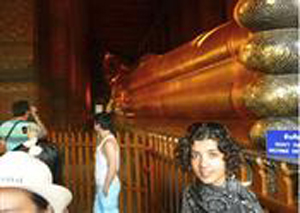Program Information
Volumetric Dose Deposition in the Breast Using Real-Time Dosimetry
A Nosratieh1*, G Burkett3, J Boone2,(1) University of California, Davis, Sacramento, CA, (2) UC Davis Medical Center, Sacramento, CA, (3) University of California Davis Medical Center, Sacramento, CA - California
SU-C-116-2 Sunday 1:00PM - 1:55PM Room: 116Purpose: To empirically determine the angular dose distribution to a breast in a digital breast tomosythesis and mammography system using real-time dosimetry technology.
Methods: Three breast phantoms, constructed from polyethylene to simulate adipose tissue, were fabricated based on ninety cranio-caudal mammography patients. The smallest (3.2 cm), average (5.1 cm), and largest (7.0 cm) breast thickness matched the measured breast shape using 13 mm polyethylene sheets. Technique factors, which matched the automatic settings in both tomo and mammo were used. Phantoms were designed to be modular allowing a dose probe to be placed in various heights and depths. A total of 390 signal trains, comprised of 15-individual pulses (one for each angle) in tomo-mode and a single pulse for mammo, were collected using a real-time air ionization chamber (AccuGold, Radcal, Monrovia, CA). The signal train was integrated to generate a dose value at each location. This data was then used to generate a dynamic model of cumulative dose deposition as a function of x-ray tube angle in tomo and mammo modes. Additionally, the effective linear attenuation coefficient for each energy was calculated. Using a look up table for the linear attenuation of polyethylene, the effective energy was calculated.
Results: The dose deposition decreases from the compression paddle to the detector. Cumulative dose from tomo scan was comparable to that of mammo; differences in cumulative dose increased with phantom size. The effective energy for tomo at 28, 31 and 35 kVp with Al filter was calculated to be 19.7, 21.7 and 25 kV respectively. For mammo at 26, 29 (Rh filter) and 30 kV (Ag filter) was found to be19.1, 20.4 and 23.7 respectively.
Conclusion: The volumetric dose deposition in Hologics dBT system shows angular dependence as a function of angle in tomo mode.
Funding Support, Disclosures, and Conflict of Interest: NIH Grants
Contact Email:


